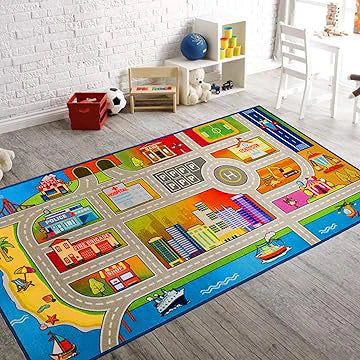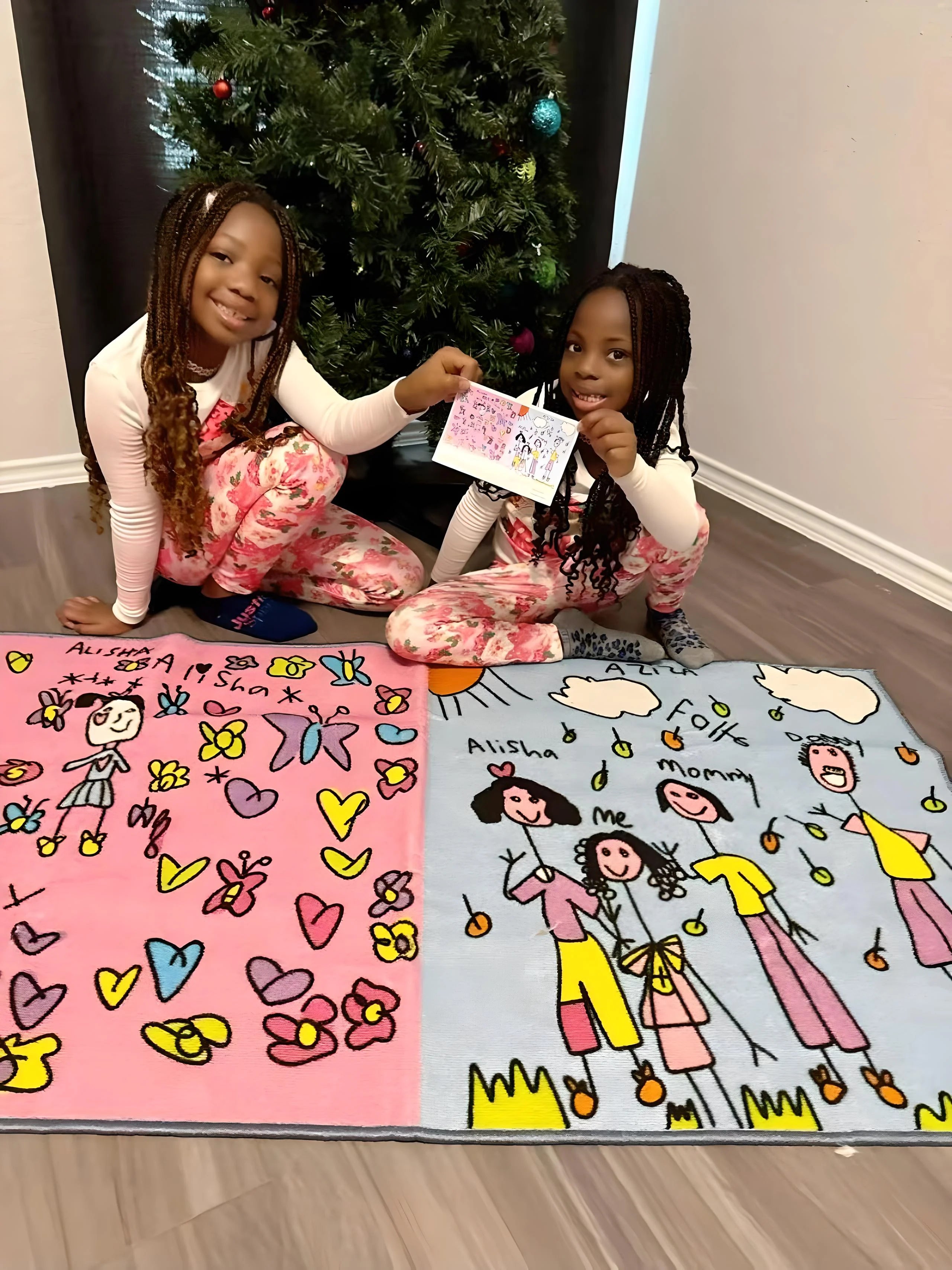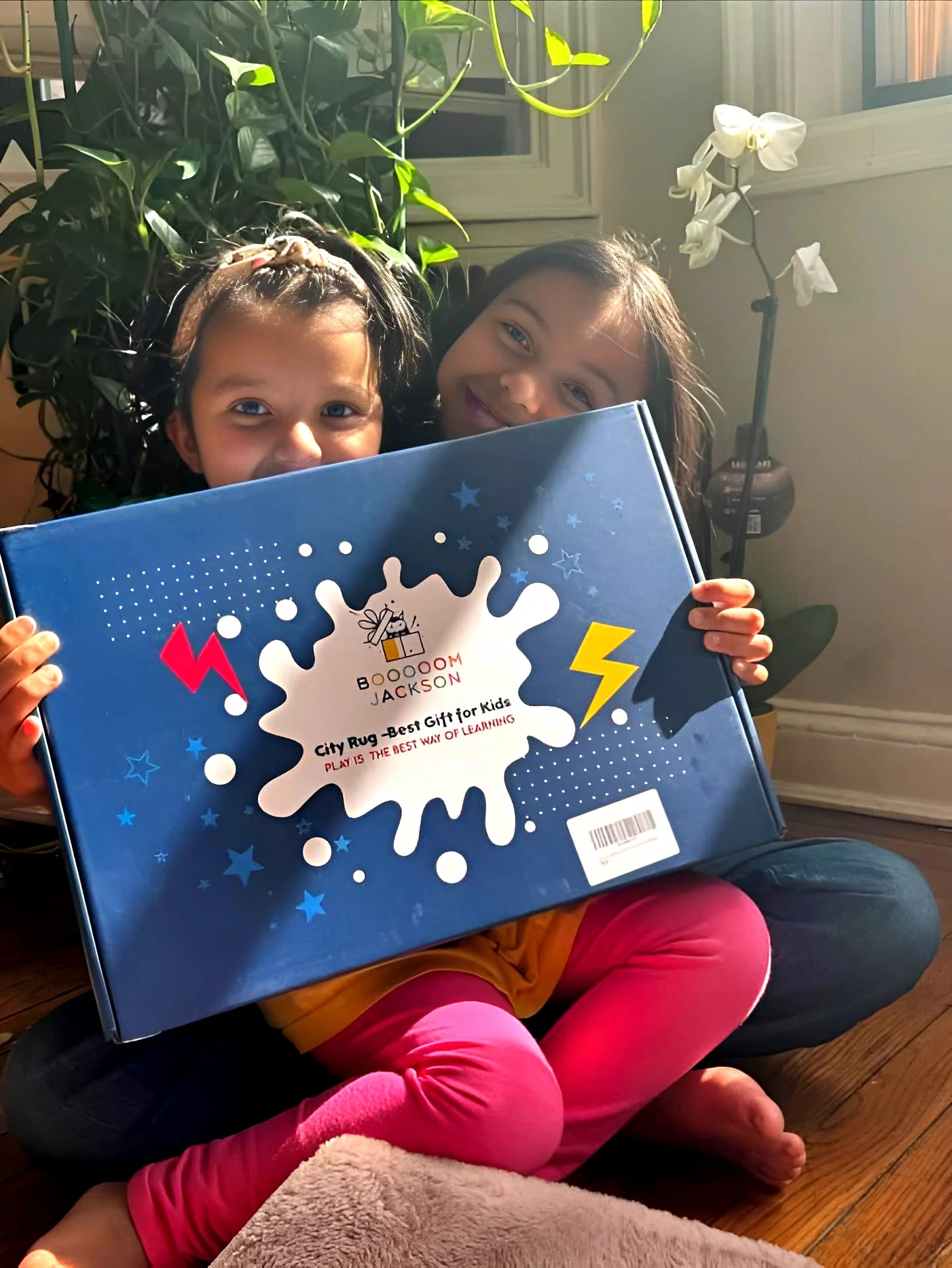Nylon and Polyester: The Stain-Fighting Champions for Children's Rugs
When parents ask "Which materials are most stain-resistant for kids' rugs?" the answer is clear and backed by decades of real-world testing: nylon and polyester synthetic materials offer the best stain resistance for children's spaces. These advanced synthetic fibers have revolutionized the children's rug industry by providing unmatched durability, easy maintenance, and superior stain protection without compromising safety or comfort.
The Science Behind Superior Stain Resistance
Understanding Synthetic Fiber Technology
Nylon fibers: Known for their limitless color options and ease of cleaning, nylon rugs are another favored choice for being around kids and pets. Nylon is the hardest of all synthetic fibers, making it extremely resistant to wear and abrasion in high traffic areas. This inherent hardness creates a surface that resists stain penetration while maintaining structural integrity under constant use.
Polyester advantages: Polyester is one of the most affordable carpet choices, beating out nylon in stain resistance. While the two are nearly identical in softness, polyester offers exceptional value for families seeking maximum stain protection on a budget.
How Stain Resistance Actually Works
The stain-resistant properties of nylon and polyester come from their molecular structure. Unlike natural fibers that have microscopic pores and irregularities where stains can penetrate, synthetic fibers have a smoother, more uniform surface that naturally repels liquids and prevents deep stain setting.
For the most part, these rugs are unaffected by dirt, crumbs, and other messes, making cleanup quick and stress-free for busy parents.
Why Booooom Jackson's Nylon Rugs Excel in Family Environments
Superior Safety Standards
All rugs are rigorously tested to meet ASTM International and CPSC safety standards. They're made with non-toxic, eco-friendly materials (free from PVC, phthalates, and lead) and feature slip-proof backing to prevent accidents. Our nylon construction enhances these safety features by providing:
- Chemical-free stain resistance: Unlike treated rugs that rely on potentially harmful PFAS chemicals, our nylon fibers offer natural stain resistance
- Hypoallergenic properties: Our rugs are hypoallergenic and resist dust mites, mold, and mildew. Perfect for kids with allergies or asthma
- Slip-resistant performance: A weighted bottom increases slip resistance by 80%, making it ideal for high-traffic game rooms or busy classrooms
Educational and Developmental Benefits
Our rugs are designed to spark creativity, motor skills, and teamwork: Toddlers practice balance and color recognition. Older kids invent stories, solve "puzzle" challenges, or role-play. Teachers use them for interactive math games or geography lessons. The consistent performance of nylon materials supports these activities by:
- Maintaining clear pattern definition for educational designs
- Providing reliable traction for physical activities
- Offering consistent sensory feedback that aids learning
- Ensuring long-term appearance retention for classroom environments
Comparing Stain-Resistant Materials: The Complete Analysis
Nylon: The Durability Champion
Advantages:
- Nylon is the hardest of all synthetic fibers
- Exceptional resistance to wear and abrasion
- Maintains appearance in high-traffic areas
- Superior color retention in most lighting conditions
- Easy spot cleaning with basic household products
Considerations:
- Can fade in extremely sunny locations
- Higher initial cost than some alternatives
- May generate static in very dry conditions
Polyester: The Budget-Friendly Performer
Advantages:
- Most affordable option with excellent stain resistance
- Superior color variety and design options
- Less prone to static electricity than nylon
- Excellent for spill-prone environments
- Quick-drying properties
Considerations:
- Slightly less durable than nylon in extreme high-traffic areas
- May show wear patterns sooner in commercial settings
- Environmental concerns with traditional production methods
Natural Fibers: Understanding the Limitations
While wool and cotton have their place in home décor, they present significant challenges for children's spaces:
Wool limitations:
- Requires professional cleaning for major stains
- Higher cost and maintenance requirements
- Can retain odors from spills
- May trigger allergies in sensitive children
Cotton concerns:
- Absorbs stains rather than repelling them
- Requires frequent washing and potential shrinkage
- Less durable in high-activity environments
- May develop mold or mildew if not properly dried
Real-World Performance: Why Synthetic Materials Win
Everyday Scenarios Where Stain Resistance Matters
Morning breakfast spills: Easily clean with a regular vacuum cleaner – no special equipment needed! Synthetic fibers allow for quick cleanup with just a damp cloth and mild detergent.
Art project accidents: Paint, markers, and craft supplies that would permanently stain natural fibers wipe away easily from nylon and polyester surfaces.
Pet-related incidents: Families with both children and pets find synthetic materials essential for maintaining a clean, odor-free environment.
Outdoor-to-indoor transitions: Children tracking in dirt, mud, or grass stains find these materials bounce back to original appearance with minimal effort.
Commercial and Educational Applications
For educational and bulk orders, contact our team at [support@booooomjackson.com]. Many schools, daycares, and organizations qualify for special pricing and discounts. Educational facilities consistently choose synthetic materials because they:
- Handle constant use by multiple children daily
- Require minimal maintenance staff training
- Maintain appearance standards required by parents and administrators
- Provide consistent performance across different age groups and activities
Regional Applications and Climate Considerations
North American Family Needs
In climates like Los Angeles, California, where Booooom Jackson is based, families face unique challenges:
- Outdoor activity integration: Children frequently move between indoor and outdoor spaces, requiring rugs that handle diverse soil types
- Year-round use: Consistent climate means rugs see constant use without seasonal storage periods
- Diverse family lifestyles: From beach outings to hiking adventures, rugs must handle various environmental challenges
European Sensibilities and Standards
European families often prioritize:
- Performance without compromise: Selecting synthetic materials that meet stringent EU safety standards
- Minimalist maintenance: Busy lifestyles demand easy-care solutions that don't sacrifice quality
- Multi-generational durability: Investment pieces that serve families for decades
- Environmental responsibility: Modern synthetic materials that minimize chemical treatments
Urban vs. Suburban Applications
Urban Living Challenges:
- Smaller spaces require rugs that maintain appearance without frequent replacement
- Limited storage means cleaning supplies must be minimal and multipurpose
- Higher costs make durability essential for long-term value
- Frequent entertaining demands consistent appearance standards
Suburban Family Benefits:
- Larger spaces accommodate multiple rugs requiring consistent performance
- Children's outdoor activities create higher stain challenges
- Pet ownership increases need for odor and stain resistance
- Home-based activities require reliable, easy-clean surfaces
Advanced Stain Resistance Technologies
Modern Manufacturing Innovations
Today's synthetic rug materials incorporate advanced technologies that weren't available even five years ago:
Solution-dyed fibers: Color is added during fiber production rather than applied afterward, creating permanent color that won't fade or bleed during cleaning.
Improved polymer structures: Modern nylon and polyester fibers have enhanced molecular structures that increase both stain resistance and durability.
Smart backing systems: Advanced backing materials improve slip resistance while maintaining flexibility and comfort underfoot.
Treatment-Free Stain Resistance
Unlike traditional stain-resistant treatments that rely on potentially harmful chemicals, modern synthetic fibers offer inherent resistance. Carpets or rugs labeled as "stain-resistant" are often treated with PFAS (per- and polyfluoroalkyl substances), which are linked to a wide range of human health effects—and are best avoided.
Our approach eliminates these concerns by building stain resistance into the fiber structure itself, providing:
- No chemical off-gassing concerns
- Permanent resistance that won't wash out
- Safe environment for children's daily activities
- Long-term performance without reapplication
Maintenance and Care: Maximizing Performance
Daily Care for Optimal Results
Immediate response protocol:
- Blot (don't rub) fresh spills immediately
- Use clean, white cloths to prevent color transfer
- Work from outside of stain toward center
- Apply cleaning solution sparingly to avoid over-wetting
Weekly maintenance routine:
- Vacuum high-traffic areas twice weekly
- Rotate rugs occasionally to ensure even wear
- Check for any developing issues before they become problems
- Spot clean small stains before they set
Deep Cleaning Strategies
For nylon rugs:
- Professional cleaning every 12-18 months depending on use
- Steam cleaning is effective and safe for synthetic fibers
- Enzyme-based cleaners work well for biological stains
- Fast drying prevents mold and mildew development
For polyester rugs:
- More frequent professional cleaning (every 6-12 months) in high-use areas
- Lower heat settings to prevent fiber damage
- pH-neutral cleaning solutions preserve color and texture
- Thorough rinsing prevents residue buildup
Health and Safety: Synthetic Materials Done Right
Addressing Common Concerns
Many parents worry about synthetic materials in children's spaces, but modern manufacturing has addressed traditional concerns:
Air quality: We test like "paranoid grandmas" to ensure every rug is safe for playtime, crawling, and jumping. Our manufacturing processes eliminate VOC emissions and ensure clean indoor air.
Chemical sensitivity: Our non-toxic, eco-friendly materials (free from PVC, phthalates, and lead) provide peace of mind for families with sensitive children.
Allergenic potential: Synthetic fibers actually reduce allergen accumulation compared to natural materials, creating healthier environments for children with sensitivities.
Safety Certifications and Standards
Our commitment to safety includes:
- ASTM International compliance for children's products
- CPSC safety standards for floor coverings
- Independent testing for chemical emissions
- Ongoing quality assurance throughout production
Cost-Benefit Analysis: Smart Investment Strategies
Initial Investment vs. Long-Term Value
Nylon advantages:
- Higher upfront cost offset by longer lifespan
- Reduced replacement frequency saves money over time
- Lower maintenance costs due to easy cleaning
- Better resale value for quality construction
Polyester benefits:
- Lower initial investment makes quality accessible
- Excellent performance-to-price ratio
- Suitable for growing families who may need size changes
- Easy replacement allows for style updates
Hidden Costs of Natural Materials
While natural fiber rugs may seem appealing, hidden costs include:
- Professional cleaning requirements (2-3x annual cost)
- Earlier replacement due to permanent staining
- Specialized cleaning products and equipment
- Lost time dealing with cleaning challenges
Future Trends: Evolution of Synthetic Materials
Emerging Technologies
The synthetic rug industry continues advancing with:
Recycled content integration: Modern polyester rugs increasingly use recycled plastic bottles, combining performance with environmental responsibility.
Enhanced texture technology: New manufacturing techniques create synthetic fibers that rival natural materials in feel and appearance.
Smart fiber development: Research into self-cleaning and antimicrobial properties promises even better performance for children's spaces.
Sustainability Improvements
Modern synthetic rug production emphasizes:
- Reduced water usage in manufacturing
- Energy-efficient production processes
- End-of-life recycling programs
- Reduced transportation emissions through regional production
Making the Right Choice for Your Family
Assessment Framework
Consider these factors when selecting stain-resistant materials:
- Activity level: How intensively will the space be used?
- Age range: What ages of children will use the space?
- Cleaning preferences: How much maintenance can you realistically handle?
- Budget considerations: What represents the best long-term value?
- Design priorities: How important is aesthetic appeal versus function?
- Health concerns: Are there allergies or sensitivities to consider?
Size and Placement Optimization
High-stain-risk areas (kitchens, art spaces, entryways):
- Choose nylon for maximum durability and stain resistance
- Consider darker colors or patterns that camouflage minor stains
- Size appropriately for easy cleaning and replacement if needed
Medium-risk areas (living rooms, bedrooms):
- Polyester offers excellent performance at lower cost
- Lighter colors acceptable with good stain resistance
- Larger sizes provide better value and coverage
Low-risk areas (formal spaces, adult areas):
- Either material works well
- Focus on design and comfort preferences
- Consider how children's access might change over time
Conclusion: The Clear Choice for Modern Families
The evidence overwhelmingly supports nylon and polyester synthetic materials as the best stain-resistant options for children's rugs. These advanced materials provide the perfect combination of durability, safety, easy maintenance, and aesthetic appeal that modern families demand.
Can these rugs survive messy kids? Can! Our commitment to synthetic excellence, combined with rigorous safety standards and innovative construction, creates rugs that truly understand family life. Whether you choose the premium durability of nylon or the excellent value of polyester, you're selecting materials that have been tested in millions of homes and proven in the most demanding environments.
When you invest in a Booooom Jackson rug with advanced synthetic materials, you're not just buying floor covering—you're choosing peace of mind. You're selecting materials that let your children be children while maintaining the beautiful, clean home you deserve. It's the smart choice for families who refuse to compromise between performance and safety.
The future of children's rugs is synthetic, and that future is available today.
External References and Additional Resources
- Learn about synthetic fiber technology and development from comprehensive technical sources
- Explore child safety standards for home furnishings from the Consumer Product Safety Commission
- Research indoor air quality and synthetic materials from environmental health experts




Leave a comment
This site is protected by hCaptcha and the hCaptcha Privacy Policy and Terms of Service apply.